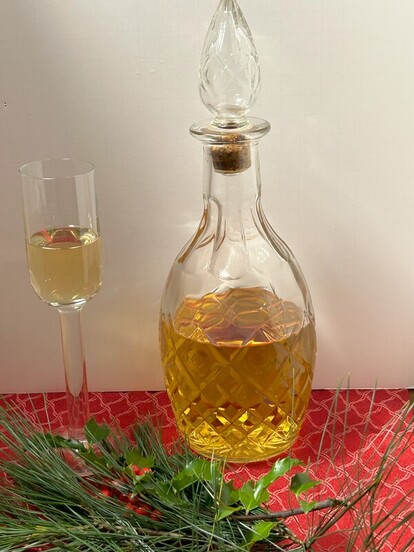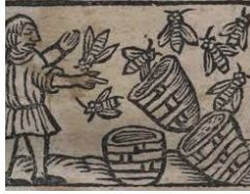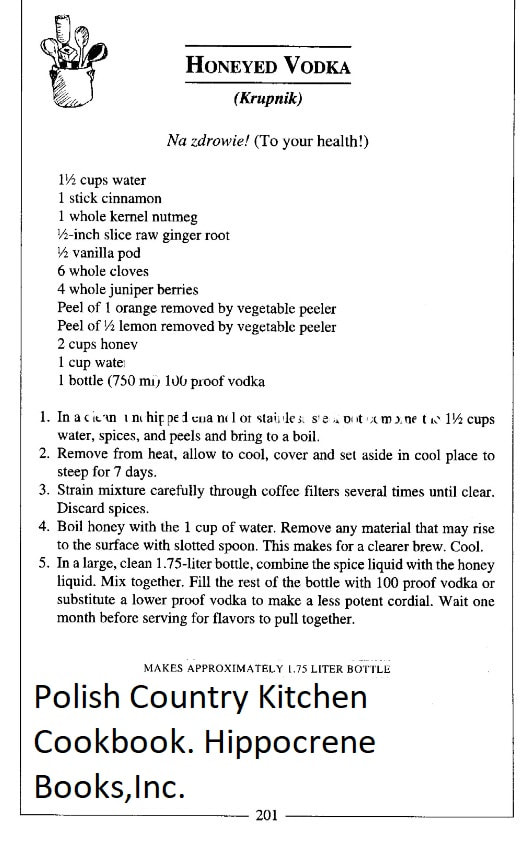|
In the Polish language, chłodnik is a term used to denote a cold soup. It’s derived from the word chłód meaning “chill” or “cooling” and is generally used to describe any cold soup made from a variety of fruits and vegetables. For instance, there is chłodnik szczawowy (cold sorrel soup) and chłodnik jabłkowy (chilled apple soup). The most popular and well known “chłodnik” is made from beets and called chłodnik litewski (Lithuanian cold soup). As the name implies, cold beet soup came to Poland from Lithuania. Ethnographer Oskar Kolberg in his volume on Lithuania writes: “…. in addition to the foods generally used by all European peoples, there are also dishes specific to this country, popular not only among peasants, but also among nobles. These dishes are the following: 1. cold soup, usually made of finely chopped beets (...) and pieces of ice thrown into the soup. When Władysław Jagiełło married Polish monarch Jadwiga Andegaweńska in the 14th century and untied Poland with Lithuania, the culture, customs and cuisine of both nations became intertwined. It remains a perennial favorite in Poland and among Polish immigrants that crossed oceans to live all over the world. The dish has its origins in the peasant population of Lithuania, made of simple ingredients that could be sown and grown by the majority of the peasant population in their gardens: beets, cucumbers, radishes, dill, chives. In the past, the base of the cold soup was a natural acid, i.e. sour rye or beetroot kvass, a sour liquid made by fermenting rye flour or beets in water. The base could also be obtained by fermenting cucumbers into pickle brine.  The fermentation gave the soup a sour taste and at the same time made it thirst quenching – a boon when laboring in the hot sun during haying and reaping grain. Over time, the sour liquid base came from the dairy. Fresh milk was curdled or soured in clay pots. The classic tang of chłodnik could also come from sour cream, buttermilk or whey… quite a versatile dish, really. In today’s times kefir and yogurt have also taken their place in making this dish. The vegetables and sour base were mixed together and kept cool in a root cellar or immersed in a running steam to keep cold. In July and August when work was from sunup to sundown and everyone was in the fields, a housewife had short time to prepare something to take for the midday meal or to pull something together for a late supper. The chłodnik could be quickly prepared. If something more substantial was needed at the end of the work day, the cold soup was poured over hot boiled potatoes or topped with hard boiled eggs, both items also at hand. Centuries have passed and as happens in the history of food and cooking, recipes were not only exchanged but also adapted to suit a locality, personal needs and tastes, undergoing changes and revisions. Another variation is chłodnik Litewski z boćwina, Lithuanian cold soup with beet greens. It is sometimes simply called botwinka, highlighting the beet greens. In this form raw the beets and the beet greens are chopped and diced, cooked either on water or a light chicken stock, cooled completely and the rest of the ingredients added. I’ve read old cookbooks and recipes that call for the inclusion of rice, cold cuts, diced veal roast, deer meat, and crayfish necks, just to name a few items. Clearly, these recipes were written at a time when meat and special ingredients was more readily available to everyone and not just seen on very high holidays... if at all. The basic recipe is a refreshing, vibrant pink vegetable soup. We most likely haven’t spent the day out in the field haying but it can be a real bonus after numerous hours in the garden on a hot day or even after laying about on the beach for an afternoon. Or just because you want to make something connected to Poland. Here is my recipe: Sources: Kolberg, Oskar. Dziela Wszystkie, Litwa. Tom 53 Reprint 1960.
Zawadzka, Wincenta. Kucharka Litewska. Wilno. Drukiem Joźefa Zawadzkiego. 1874 Photos by author.
0 Comments
 Not to confused with the barley soup that uses the same name, krupnik was (and still is) a popular alcoholic drink prepared in homes throughout Poland and Lithuania from the time of the Middle Ages. Vodka began to appear in Poland in the 16th century and commonly available by the 1800s. Sugar, however was a more rare commodity - too expensive to be used as a sweetener- people reached for the more readily available honey that often came from their own beehives to make their liqueurs. Krupnik is made from easily available ingredients but there are as many recipes for krupnik as there are individuals who like to make their own spirits. Some may have an old family recipe or preferences for a particular spice or ingredient such as cardamom or anise or seek a more intense ginger flavor. Author photo. The two mandatory ingredients to make krupnik are (1) vodka which comes in a range of proofs such as 80 or 100 or the very potent spirytus at 192 proof; and (2) honey. The type of honey (buckwheat, wild flower, orange blossom, linden flower, etc.) will make a difference in shaping the color, taste and final aroma of the drink so that, too, is personal preference.  The beautiful amber color, the final sweet and aromatic aroma with hints of cinnamon, ginger and cloves is worth making in autumn or winter or for the Easter holidays. It can be served in small glasses at room temperature or, for those cold nights, heated in a pot over low heat and served in tiny cups. It also goes great with chocolate! Woodcut of beehive from 16th c. Polish text. Here is a recipe from Polish Country Kitchen Cookbook p.201 Smacznego! (May it be tasty!)  |
Categories
All
One of the biggest moments in my life was being able to sign for my very own library card. When I'm not reading, researching and writing I'm riding my bike, sewing or gardening. I love flea markets, folk art, and traveling to Poland.
Archives
July 2024
|





 RSS Feed
RSS Feed